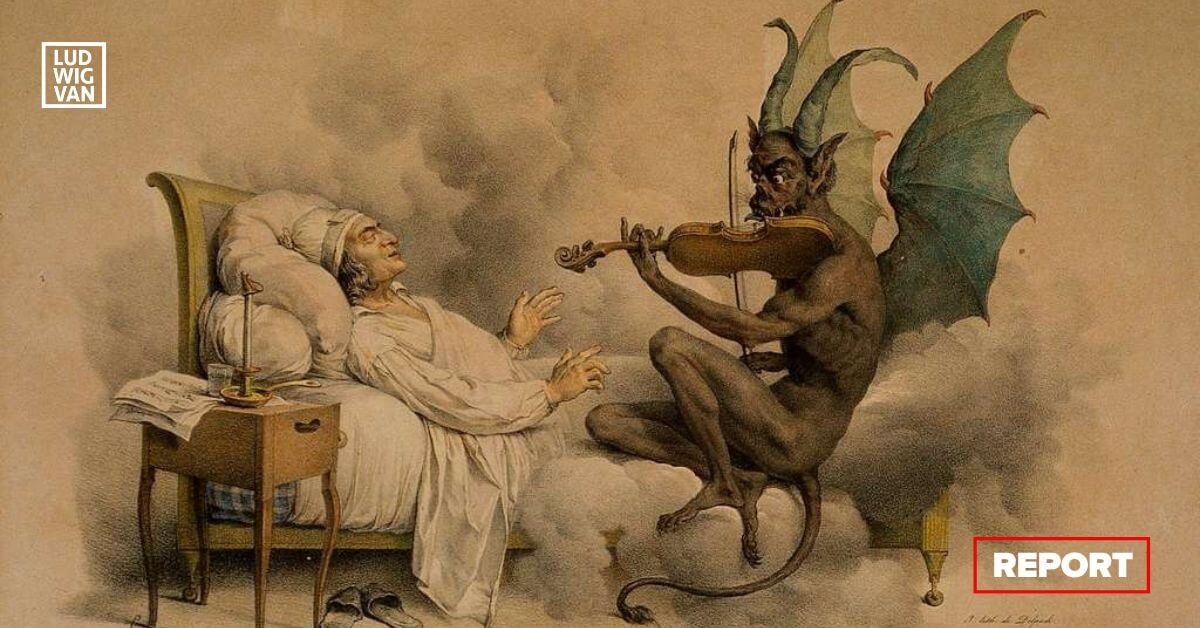
In 1714, virtuoso violinist Giuseppe Tartini realized that when he played a double-stop that was perfectly in tune, he could hear a third tone. The soft third tone vibrates more quietly below the other two, and Tartini called them terzo suono.
In a 2018 article in The Strad, Associate Professor, Desautels Faculty of Music at the University of Manitoba describes the phenomenon in some detail, and according to a precise formula.
The third tone was once widely thought to be a simple quirk of hearing, or “a subjective phenomenon generated by the listener’s cochlear nonlinearity” as Italian researchers write in a 2010 paper. In other words, the sound is generated by a blend of the two notes as they resonate inside our own ears, and not by the instrument.
That paper goes on to detail experiments that demonstrate the generation of third tones — but, are they what Tartini heard?
One or two violinists played several dyads, and then each violin played one note of the dyad. Spectral analysis (essentially, calculation of the waves) was applied, and proved the existence of the so-called violin combination tones.
- Combination tones were found in all of the dyads;
- BUT — only when the dyad is played by one violin (not two).
That last finding is where doubt arises that what Tartini heard is, in fact, the same phenomenon. Tartini conducted his own experiments, and he wrote that he clearly heard third tones with both one and two violins.
Could it be the violin itself?
Perhaps the Tartini mystery lies in the instrument itself. Could the violins he used have made a difference?
A 2022 study by researchers at the University of Florence (Italy) looked at how different violins produced the combination tones. Published in The Journal of the Acoustical Society of America, the paper is titled Characteristics, mechanisms, and perceivability of combination tones in violins.
To analyze the sound, they compared the sounds generated by same two notes played by violinist Chiara Morandi on five different violins. They consisted of: a Tononi violin dating from 1700, an anonymous 18th-century Italian violin; a 19th-century violin by Henry Lockey Hill of London; a handcrafted violin dating from 1971; and a modern, factory-made instrument.
The experiment
The results were judged by 11 professional and amateur musicians, who listened to the tones as is, and with the combination tones digitally removed.
- They could hear the difference nearly every time;
- Even the least accurate of the listeners was correct 93% of the time.
When it came to the violins themselves, they found some interesting variations.
- All the violins produced a combination tone;
- The oldest violin produced the most audible combination tones;
- The difference in loudness between the 1700 Tononi and the modern factory-made instrument was about 75%.
Lead researcher Giovanni Cecchi is quoted in The Guardian. “The strongest one was found in an old Italian violin, made in Bologna in 1700 by the famous luthier Carlo Annibale Tononi,” he said. He emphasized, however, that quality and not age itself was the key issue. “Combination tones were negligibly small in violins of poor quality.”
Proving that the combination tones exist outside the ear is a significant step. Aside from Tartini and his observations, however, Cecchi noted that the combination tones affected the perception of the music by listeners.
The magic is in the instruments; it’s only now that science is starting to unravel the details.
#LUDWIGVAN
Get the daily arts news straight to your inbox.
Sign up for the Ludwig van Daily — classical music and opera in five minutes or less HERE.
- INTERVIEW | Larry Weinstein Talks About His Film Beethoven’s Nine: Ode To Humanity, Premiering At Hot Docs - April 18, 2024
- PREVIEW | JUNIOR Festival Offers A May Long Weekend Of Arts & Performances For Kids - April 18, 2024
- PREVIEW | Esprit Orchestra Ends 2023-24 Season With Sonic Universe - April 17, 2024



